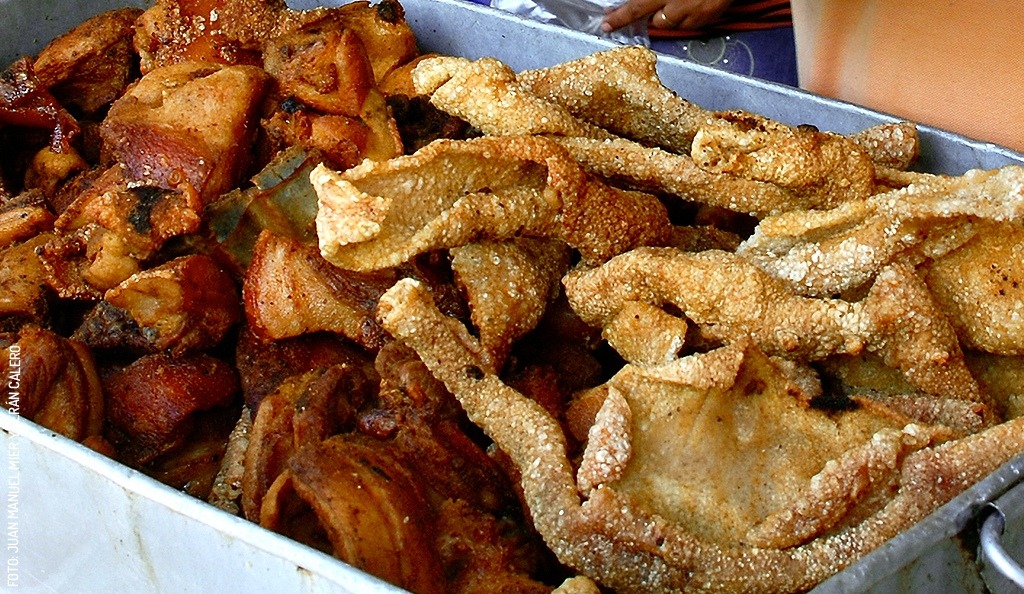
Yucatecan Chicharra, the best food made of chicharrón
Yucatecan Chicharra, the best food made of chicharrón
A Beginner’s Guide to Yucatecan Chicharra
What is Yucatecan Chicharra? Why is there an entire Mérida neighborhood devoted to Chicharronerías? Why can no Yucateco, regardless of walk of life, resist a Taquito de Chicharra? We try to explain.
One of the most enjoyable things that one can do on a trip is to try local foods. There are, of course, the established family-recipe delights and award-winning culinary creations in restaurants plain and fancy. But there are always those more challenging food items that could be a turn-off at first glance, but actually turn out to be potentially delightful once you get over what they are and the fact that they will, if eaten in excess, probably kill you.
Most Mexicans in general love their pork. From pickled pig’s ears, chopped into chunks and eaten by the toothpick-full washed down by a frosty Cerveza in a cantina, to crunchy-chewy pork belly tacos at a street front taqueria, to crispy pork cracklings enjoyed from a bag with hot sauce and more, the mighty pig is a huge part of the national diet.
Chicharra, or Yucatecan Pork Belly with the works
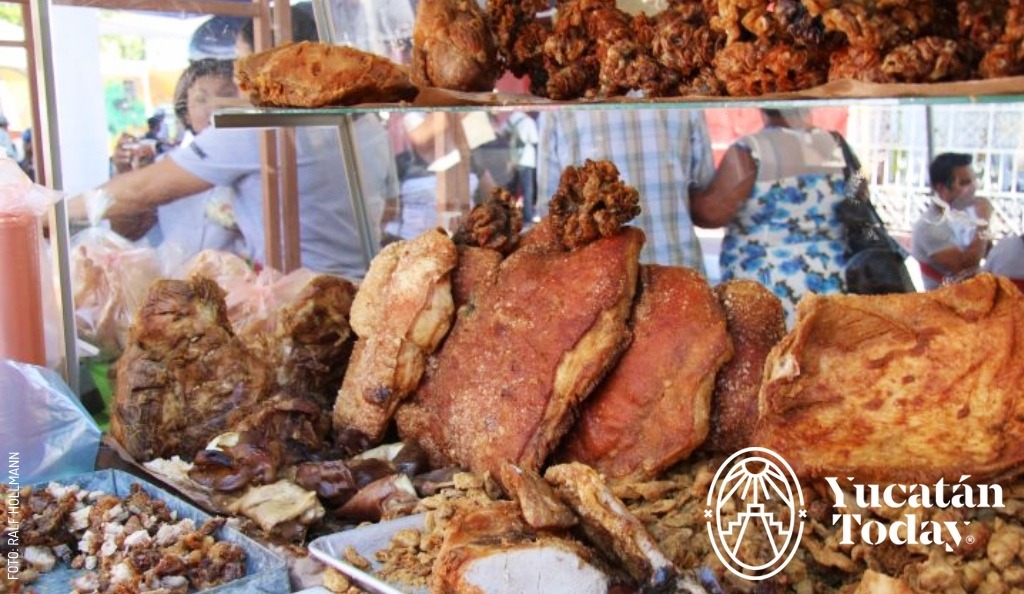 And while in other parts of the country Chicharrones or pork cracklings are served as a snack, Yucatecans make a complete meal out of what they call Chicharra. Pork skins and pork belly (known locally as Castacán) served up with a mix of chopped cabbage, tomatoes, cilantro, radishes, red onion and a squeeze of lime or sour orange juice. If you order Surtido, loosely translated as “varied”, you’ll also get chopped up organ meats and Morcilla in the mix. Traditionally this massive onslaught of calories and cholesterol is served with a stack of hot corn tortillas, Salpicón (a radish, cilantro and bitter orange dressing), a whole Chile Habanero and a bowl of frijol Kabax which is black beans cooked to tender perfection in a broth flavored heavily with—you guessed it—pork lard.
And while in other parts of the country Chicharrones or pork cracklings are served as a snack, Yucatecans make a complete meal out of what they call Chicharra. Pork skins and pork belly (known locally as Castacán) served up with a mix of chopped cabbage, tomatoes, cilantro, radishes, red onion and a squeeze of lime or sour orange juice. If you order Surtido, loosely translated as “varied”, you’ll also get chopped up organ meats and Morcilla in the mix. Traditionally this massive onslaught of calories and cholesterol is served with a stack of hot corn tortillas, Salpicón (a radish, cilantro and bitter orange dressing), a whole Chile Habanero and a bowl of frijol Kabax which is black beans cooked to tender perfection in a broth flavored heavily with—you guessed it—pork lard.
Mysterious Morcilla
What is Morcilla you ask? In Germany it is known as blood sausage. And unlike its European counterpart, which is carefully and evenly (it is German after all) sliced up for sandwiches at the butcher shop, our local morcilla, lying there in its own rather mysterious juices and covered in onions and habanero peppers, can appear somewhat unappealing to the untrained eye. Its flavor —blood cooked with mint, Chile Xcatik, onion and Habanero encased inside a thin wall of what is likely intestinal origin—is definitely in the “acquired taste” category for most foreigners and I dare say many locals as well.
Tasty puyules
And then you might be served up some snack-sized Puyul. Pu…what? What in the world could this be? Well, it’s pronounced poo-YULE, to begin with. Puyules are little morsels of pork fat, fried and salted, that when you pop them into your mouth, first crunch, then melt on your tongue in an explosion of salty lardy goodness. These are also tossed liberally onto the Chicharra as don Pedro Cauich Correa, of Mérida’s pre-eminent Chicharroneria La Gloria insists that a Chicharra without Puyul is simply not a Chicharra.
Everything is topped off with some broken pieces of Cáscara (shell) which is the air-filled fried up pork skin that most closely resembles the commercial cracklings you would find in a southern US grocery store.
How to enjoy Chicharra like a Yucateco
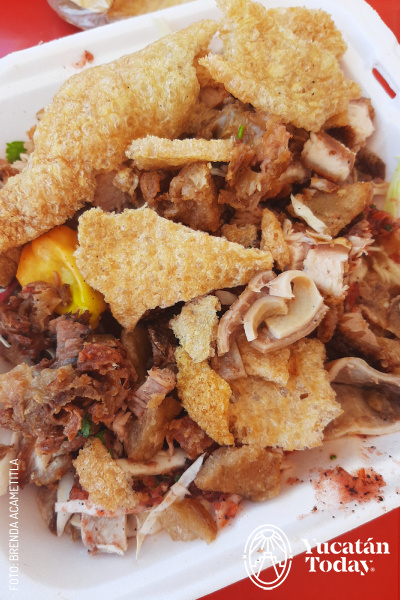
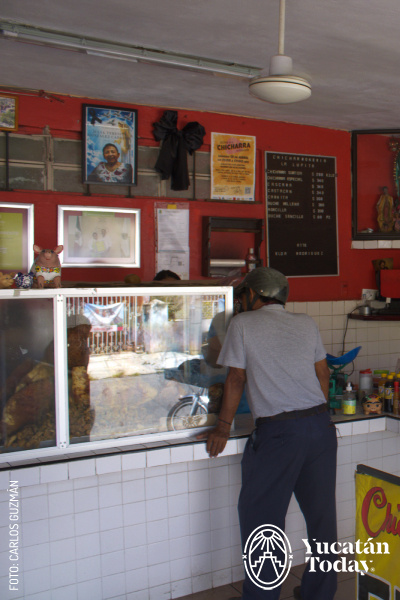
If done right, tacos de Chicharra with all the fixings are quite delicious and I advise you seek out a place recommended by a knowledgeable Yucatecan. If you are a vegan or vegetarian (you will most likely run away screaming in horror if you are vegan to be honest), or at all squeamish about meats that would never appear in your supermarket meat counter back home, I would avoid looking too closely at the various organ meats on display.
And of course, to fully appreciate and completely enjoy the chicharra experience—quite often had at breakfast, by the way—the most common practice is to accompany this caloric bombshell with an ice-cold Coca Cola, in a glass bottle. The result, for those of us who love to make a deep dive into local cuisine and traditional cooking, is pure culinary heaven.
Photography by Ralf Hollmann, Juan Manuel Mier y Terán, Brenda Acametitla y Carlos Guzmán for its use in Yucatán Today.
First published in Yucatán Today print and digital magazine no. 441, in August 2024.

Author: Ralf Hollmann
A bonafide Yucatecan born in Germany and raised in Canada, with a degree in Hospitality and Tourism from the British Columbia Institute of Technology and an occasional source of sometimes-deserved snark, Ralf has experience traveling, leisure tourism, copyediting, creative writing. He also plays the guitar and enjoys taking photos. IG: ralf.around.the.world
In love with Yucatán? Get the best of Yucatán Today delivered to your inbox.
Related articles
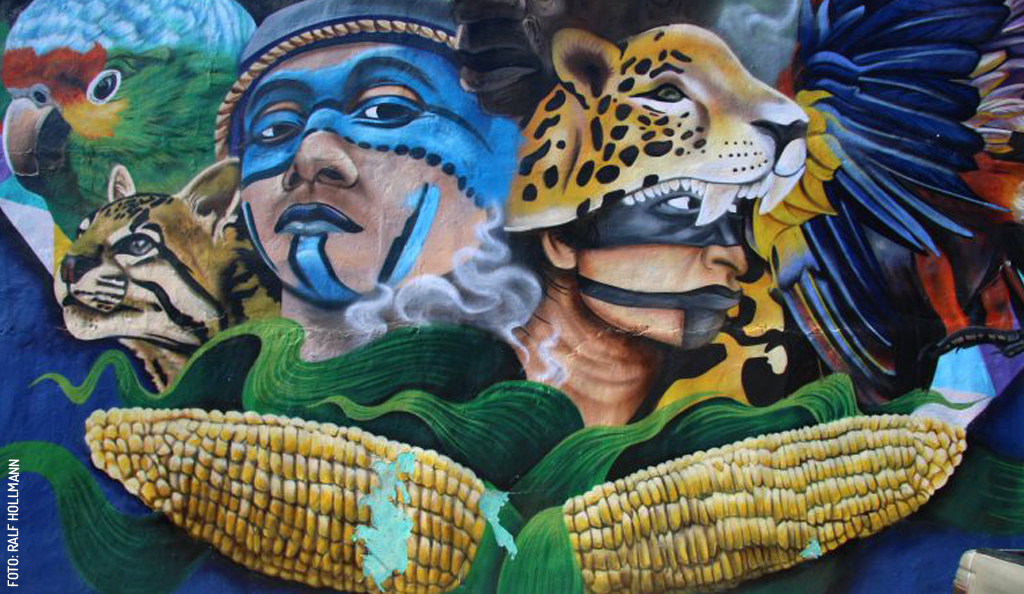
Xcalachén: Food and Art
The vibrant neighborhood of Xcalachén in Mérida, Yucatán, known for its street art and traditional food like chicharra. Enjoy the cultural richness.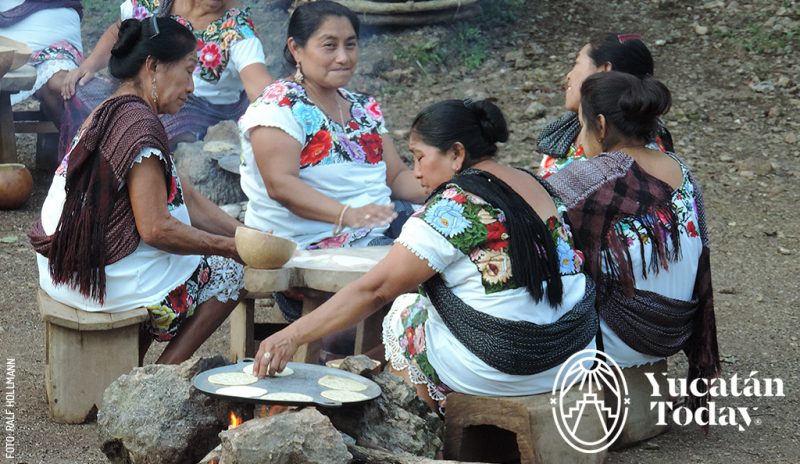
Popular Yucatecan Beliefs, my Chichí's Advice to Good Health
I have many memories of my “chichí” (my grandma, in case you’re unfamiliar with the Maya word) from when I was young. She was always giving me...




